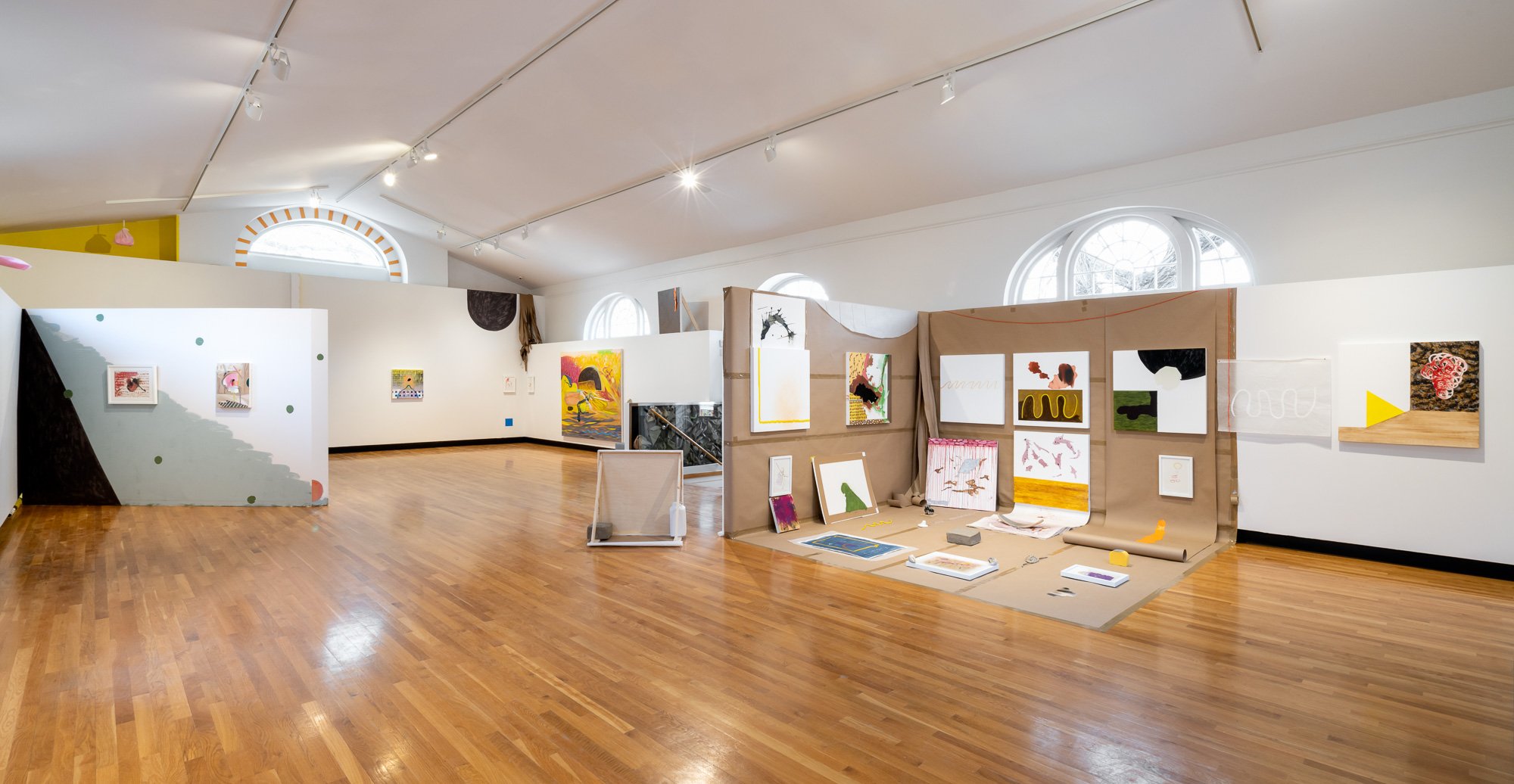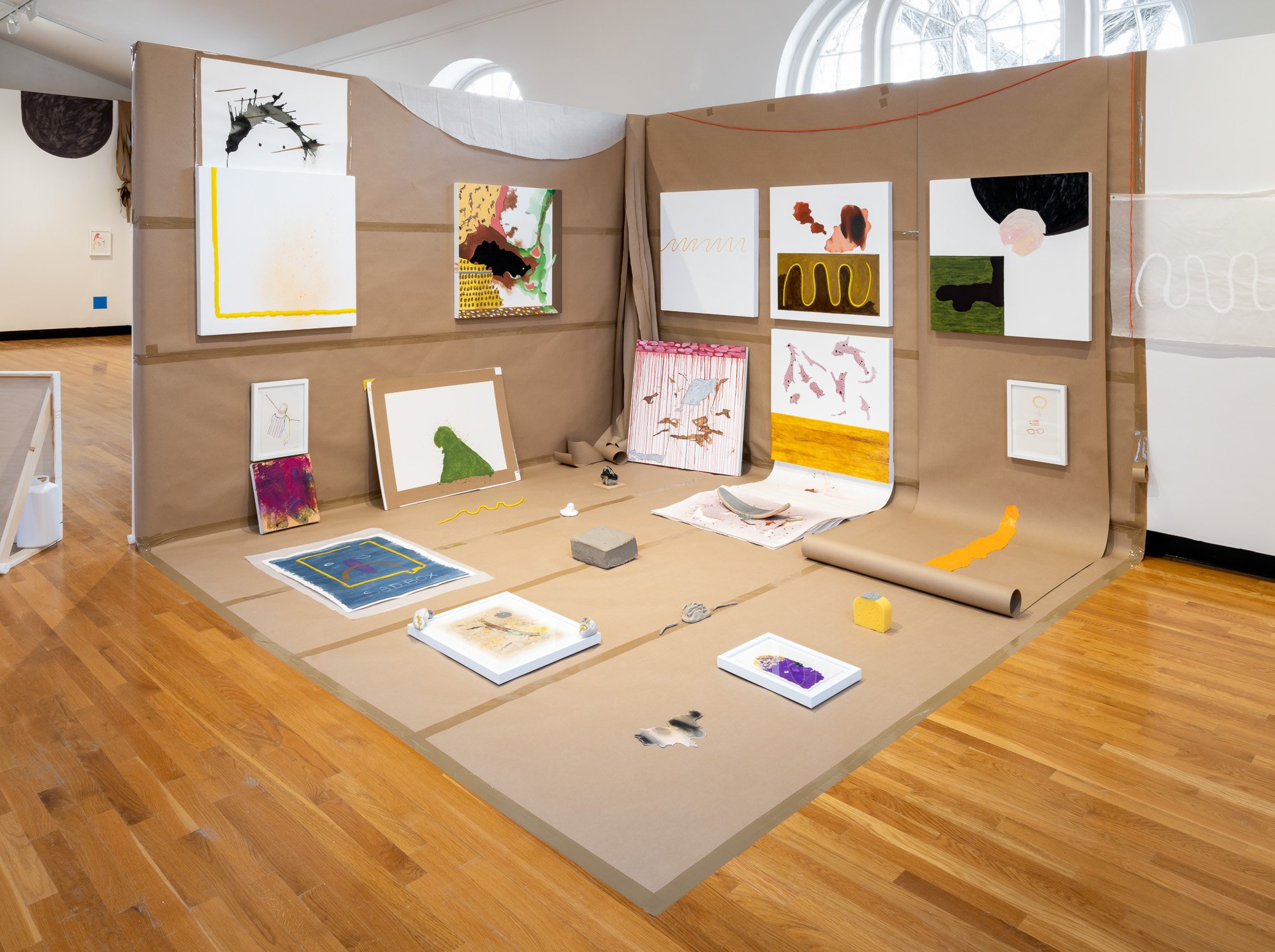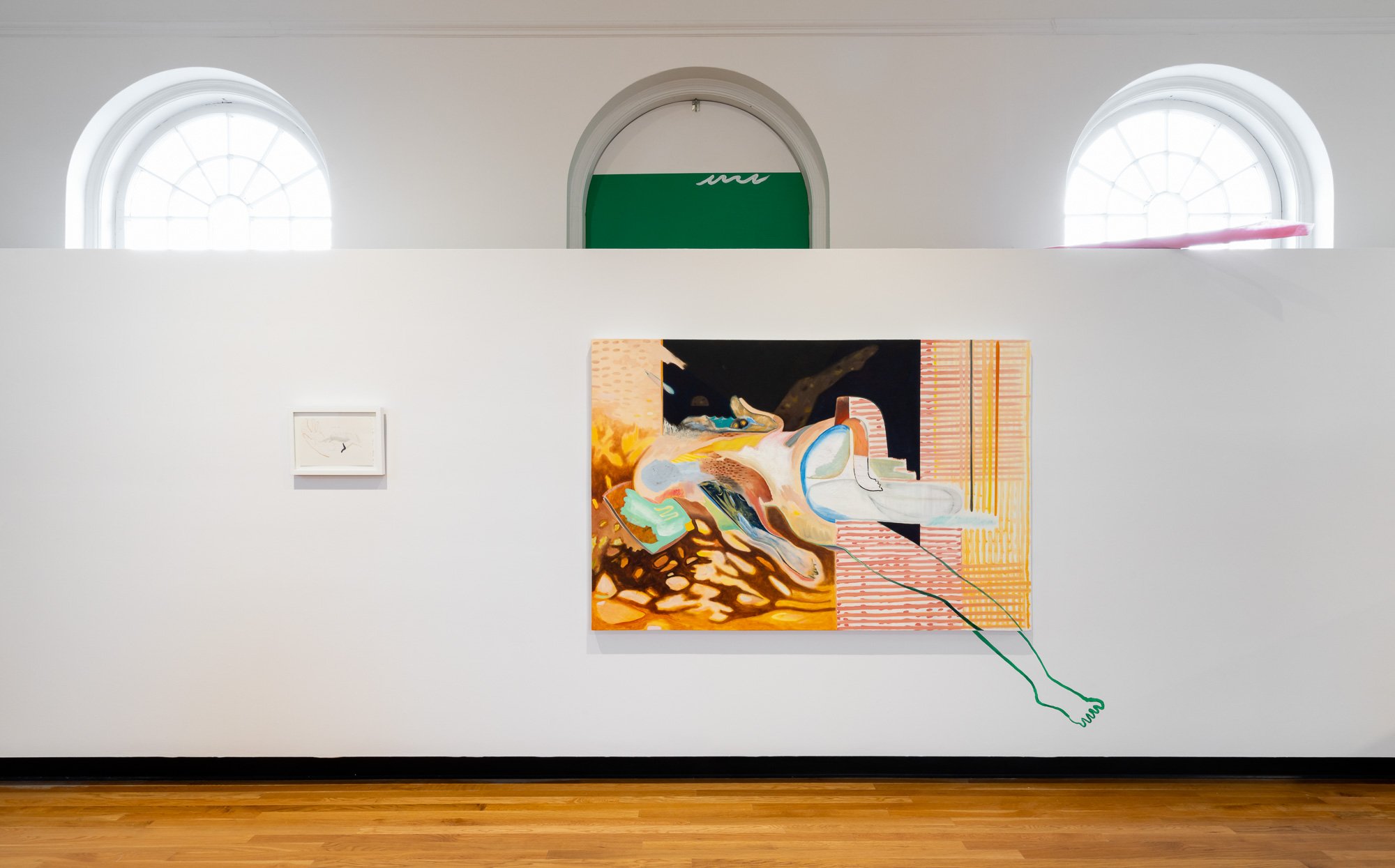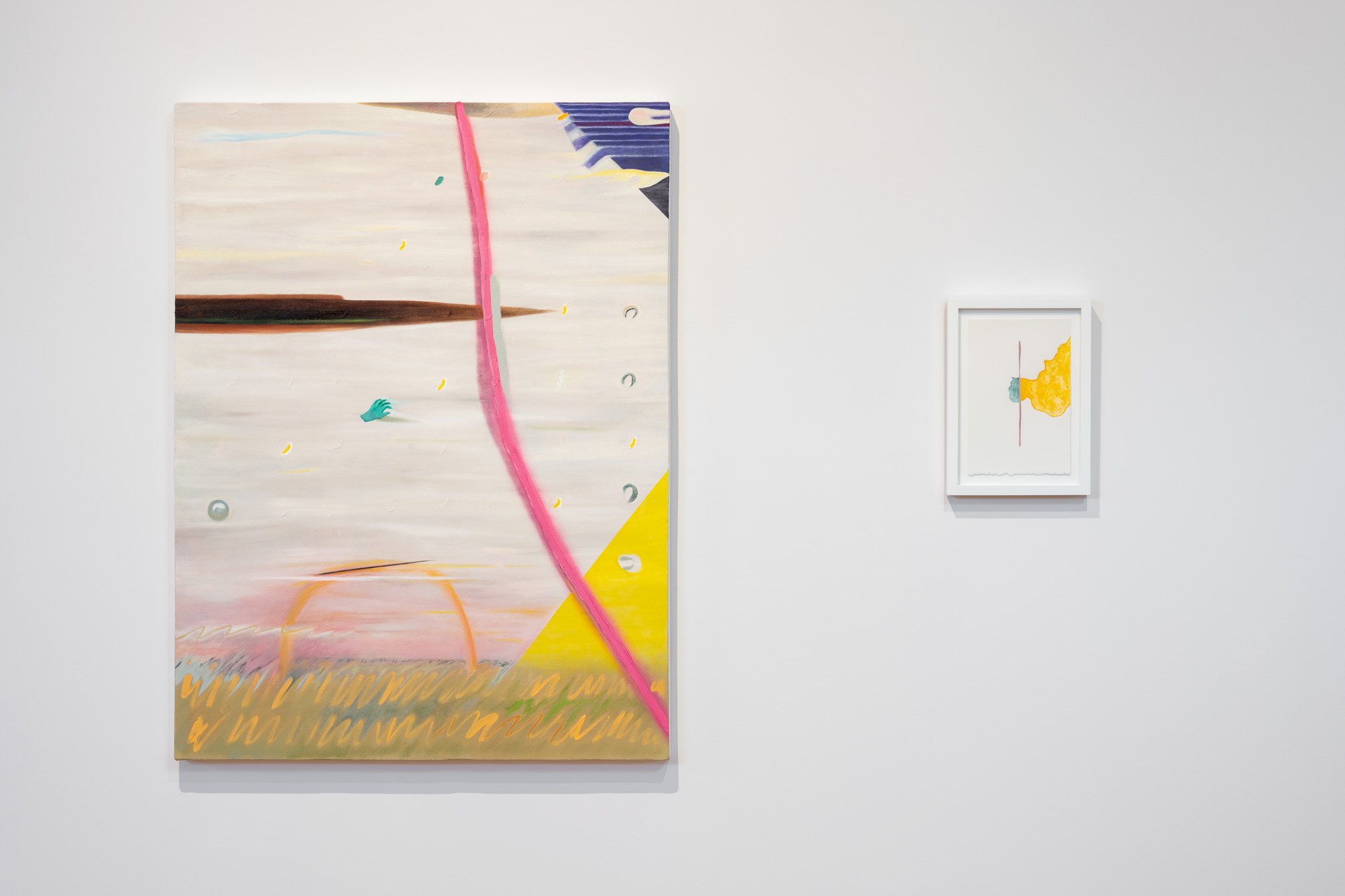
The Primacy of Perception: Mandy Espezel’s Body Longing at the Southern Alberta Art Gallery, Lethbridge.
Nov. 26, 2021 to Feb. 13, 2022.
Mandy Espezel’s site-specific painting-installation, Body Longing, grapples with the physical world. The title is an apt description for a show about perception and embodied encounters that is all the more important in this age of screen-saturation compounded by the pandemic, in which we find ourselves mere avatars, wondering if we are pure simulacra. We know painting and figuration are no longer dead or at risk of dying. But what is its future, especially now, in a moment when our lives and worlds are so mediated by the digital? Body Longing explores the ways that painting offers an unmediated, embodied, and direct way to seeing.
Espezel is Canadian artist originally from the Regional Municipality of Wood Buffalo in Northern Alberta but has been living and working on Treaty 7 territory in Lethbridge, Alberta for a decade. Body Longing is the culmination of several residences that the artist has recently completed in Tartu, Estonia, South Korea, and at the Banff Centre in which the small studio spaces she was given became a key focus of her experimentations in installation, prompting a reciprocal move from canvas and paper to architectural space and back again.
This smaller gallery space is part of the old Carnegie Library building which was SAAG’s first home and the installation pulls references from her paintings and inserts them into the architectural frame of the curvilinear windows and the various nooks and crannies that make up this atypical exhibition space. A white plastic bag full of neon pink paper strips hangs high up from the ceiling in one corner, squares of bright orange paint decorate one window casement, others are boarded or papered over with brown kraft paper and green painter’s tape. Rolls of felt and the same brown kraft paper used throughout the space are placed haphazardly, in some places tucked into corners almost out of sight, suggesting the painter or gallery preparator has tidied up their tools and might return tomorrow. The paintings and the exhibition are in a state of becoming. Will the artist come back to finish what they have started? Is this installation, in fact, complete?
One of the real strengths of the show are the three large-scale oil paintings, two of which are hung in standard gallery fashion, the third resting on blocks of wood as if waiting for the preparator to return and finish the hang. The paintings are given breathing room and stand apart from the larger installation but are also clearly a key part of our sense of Body Longing as one totalizing work. The three large-scale oil paintings are stand-outs. One is a landscape in hot pink with yellow and orange gestural forms reminiscent of a wheat field with a dark central opening suggesting a tunnel below which horizontal registers become water; it is rendered in bright acidic Peter Doig-eques colours. A single leg on the left-hand side is the only human presence and is repeated in the centre where it curves into a tail-like form that is more animal than human. Like many of the paintings and works on paper, this work oscillates between the poles of abstraction and figuration and is a standout from the show. In another painting, an amorphous, semi-abstracted figure’s green leg exceeds the picture plane, the ankle and foot are painted directly on the gallery wall suggesting that the painting was incomplete until brought and hung here in this exact space. The formations and hints of flesh in the paintings and drawings call to mind Amber Wellmann’s fluid, transforming bodies, bodies which reveal and revel in becoming. Painting is a collaboration here, not between two people, but rather the artist and the gallery space. The installation establishes a conceptual push-pull between the paintings and the space. Like Laura Findlay’s installations of paintings and ceramic vases, Espezel translates painting into three-dimensional space in such a way that the installation enlivens both Espezel’s drawings and paintings and they, in turn, enliven the space. Here, painting is a collaboration between space and surface; the artist deftly translating painting into three-dimensional space.
As one takes in the playful, brightly coloured interventions in the space, my body longed to see what was tucked into the far back corner of the gallery space where the artist used another partition wall to create a small almost cordoned off room. The partitions are hung with brown kraft paper that flows onto the gallery floor, held together by commercial brown packing tape. Unframed drawings and smaller scale oil paintings are hung salon-style, crammed together on the brown papered walls, as well placed grid-like on the floor of brown paper. I felt as though I had just stepped into the artist’s studio and this tightly packed installation operates like a microcosm of the larger installation itself. Ceramic forms are placed in conversation with the two-dimensional drawings, some positioned directly on top as paper weights on their corners. This is the only aspect of the installation that did not entirely came off. The interrelationship of Western oil painting and drawing with the specific architecture of the space are the real strengths of the show, while the ceramic pieces pulled me away from this conceptual exploration. Their role in this immersive revelation and contemplation of process was less clear. A bit more consideration of the role the ceramics play in an otherwise novel installation might have led to more editing, giving a bit more breathing room to the architecture and 2D works, thus underscoring the thematic of process and intuition here.
Body Longing is about reigniting a phenomenological encounter with artworks, but it is also a demonstration of the artistic process, played out directly in the gallery. Espezel manages to make the gallery “thing” in a refreshing and innovative way, challenging the ontology of painting and the white cube simultaneously.



